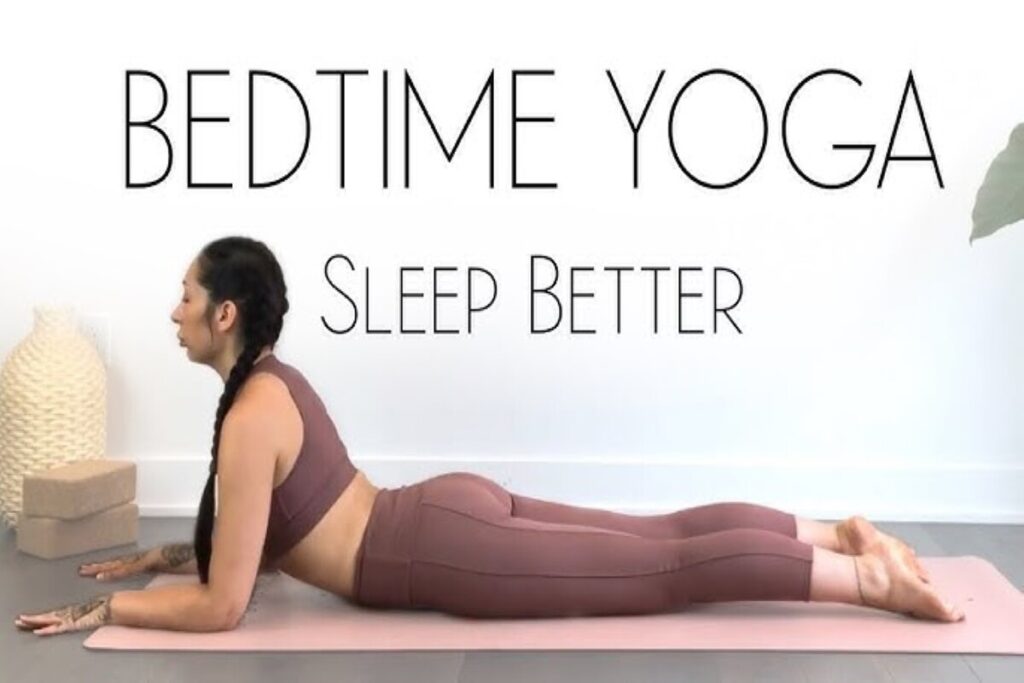There are various forms of yoga; however, a calming yoga routine to help ease insomnia is the surest bet for folks who have lost their circadian rhythm. Some wellness coaches advocate intense workouts right before bed, which may leave you feeling edgy and sore over the night.
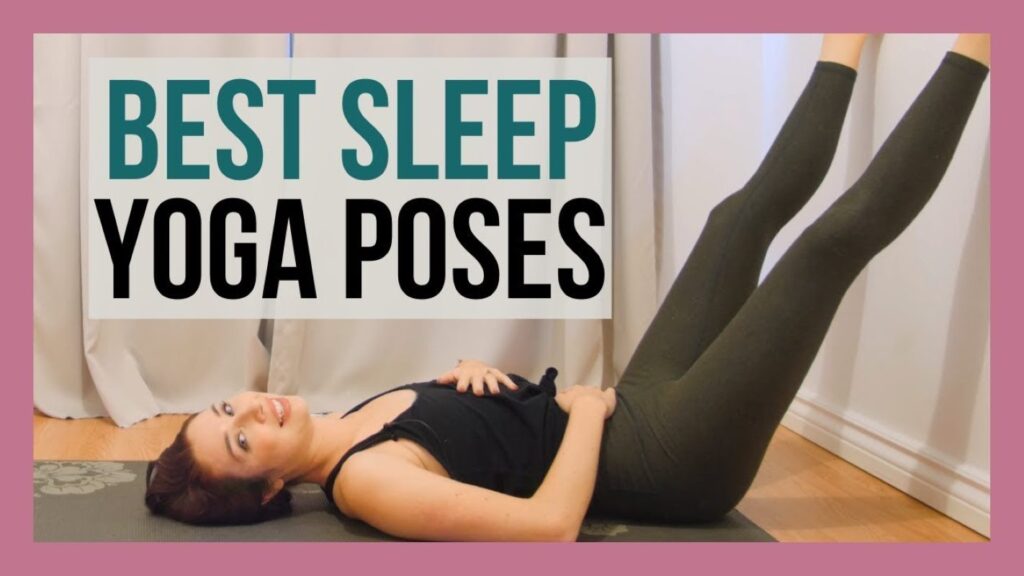
So, try a calming yoga routine to help ease insomnia because it reduces stress and relaxes the muscles. Besides, all you need for the four routines in this piece is a yoga mat. So, let’s get right to it and stop insomnia from ruining your overall wellness.
1. Inversion Pose (Legs-up-the-wall)
This yoga routine gently inverts the muscles around the neck, hamstrings, and frontal torso. Its goal is to prime the body for sleep subconsciously.
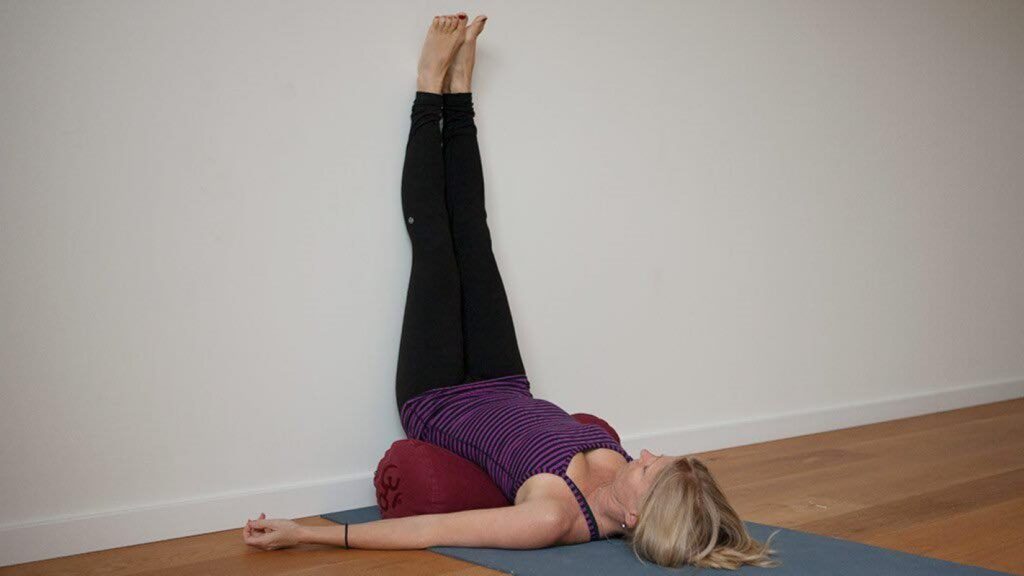
To nail a legs-up-the-wall routine, carefully follow the steps below:
- Position your yoga mat next to a free section of the wall, ensuring no obstructive clutter is around.
- Lie on your back with your knees bent and your feet soles on the ground.
- Slowly and carefully move your feet, resting your core weight on your lower back and making your torso flush perpendicular against the wall. Extend your legs up the wall and make your lower back partially parallel with it. Go only as far as your torso muscles permit.
- A cushion or fluffy blanket could help dampen the floor’s hardness against your upper back.
- Once in this position, extend your hands, palms up, and remain in that position for as long as possible. During the routine, stretch those muscles by practicing deep breathing.
ALSO READ: 5 Sleep Habits to Boost Your Longevity and Well-Being
2. Child’s Pose
The child’s pose is another calming yoga routine to help ease insomnia. It stretches the muscles of the latissimus dorsi (shoulder/arm), hips, lower back, ankles, and thighs. The goal of the child’s pose is to passively stress the back torso muscles while relaxing those in the front.
This yoga routine has been discovered to induce melatonin secretion, reduce stress, and aid mental clarity. The steps for nailing the child’s pose are as follows:
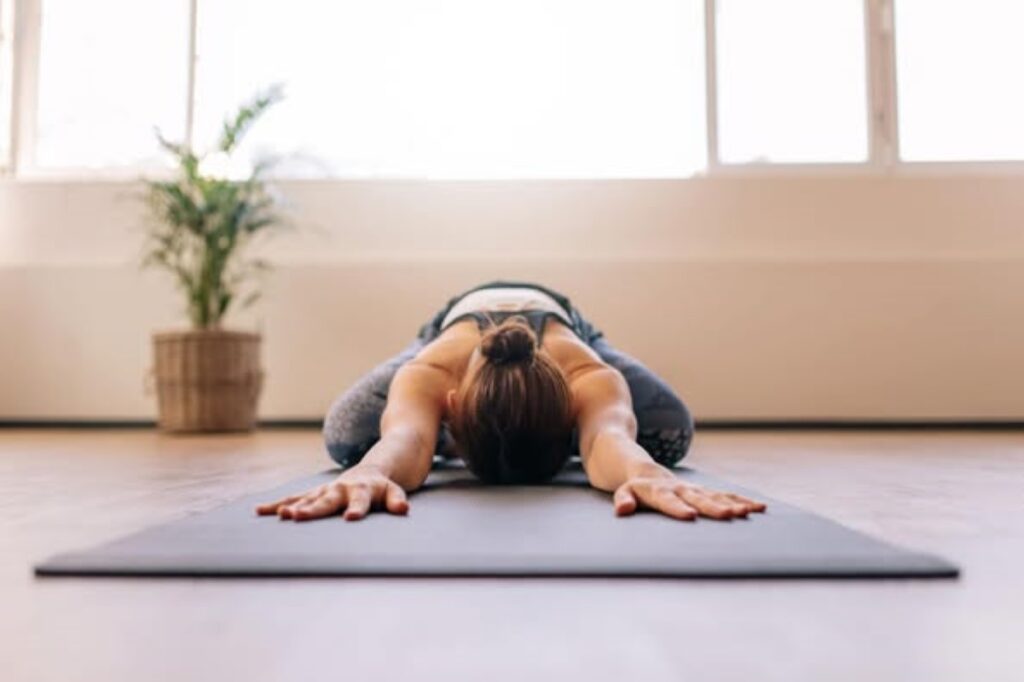
- Go on all fours, making your big toes touch. While doing so, extend your knees apart, at least more expansive than your hips. Next, maintain that configuration and sit back on your heels.
- Start with a deep breathing exercise. As you get into the rhythm, slowly lower your torso into the space between your thighs. Ensure the toes are still touching, and you could use a cushion to support your torso during the Child’s Pose.
- Next, stretch out your arms right before you with the palms facing upward.
- Count ten breaths in that position and rise when you’re done.
3. Puppy Pose
A Puppy Pose is a slightly modified Child’s Pose. When done correctly, it has a similar effect to an upper back massage. The Puppy Pose is acclaimed for activating the pituitary gland and relieving stress by stretching the shoulders, spine, and upper back.
There are also suggestions that the Puppy Pose activates the abdominal chakras, thus boosting emotional connections. Here’s how to go about a Puppy Pose:
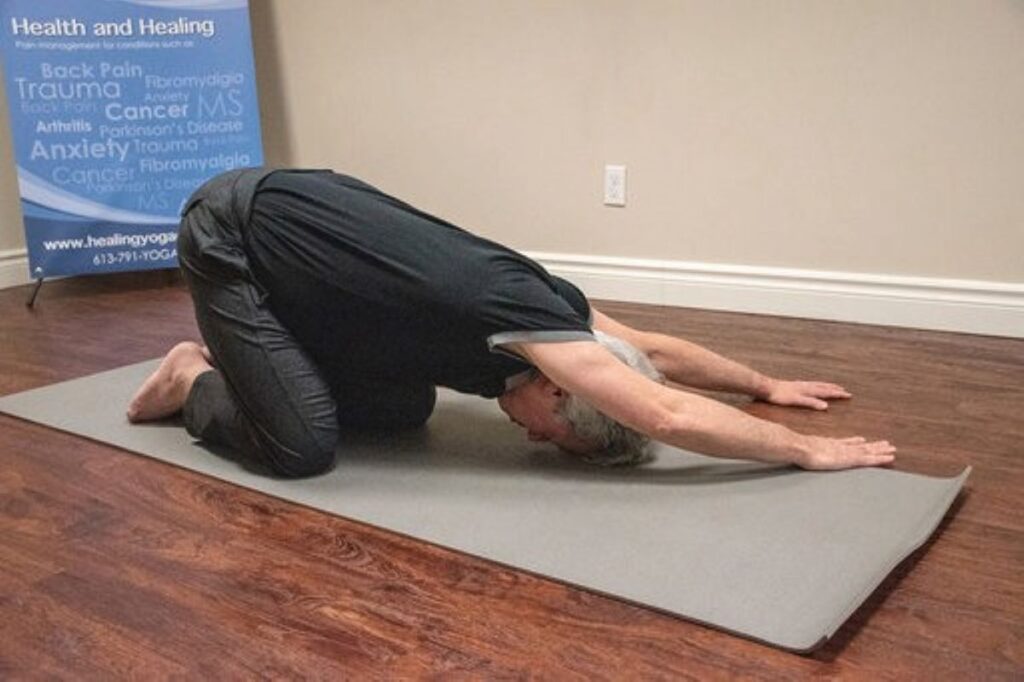
- Go on all fours with your knees and palms flushing against the floor.
- Avoid moving your hips from their initial position as the arms extend out in front of you, and the elbows should not touch the floor.
- While exhaling, slowly move your torso backward till the buttocks are halfway to the heels. Maintaining this position, gently place your forehead on the mat.
- In this position, stretch your hands out as far as possible and arch your back slightly for the next 5 to 10 breaths.
- Once you’ve completed the cycle, return to resting on all fours for a while before rising to your feet.
4. Supine Twist
Different forms of twists have long been implicated in detoxification and eliminating tension. Likewise, certain twist positions have been identified as helpful in reducing blood pressure and inducing restful sleep.
Couples with shared interests like yoga can lubricate their companionship by practicing Supine Twists together by following these simple steps:
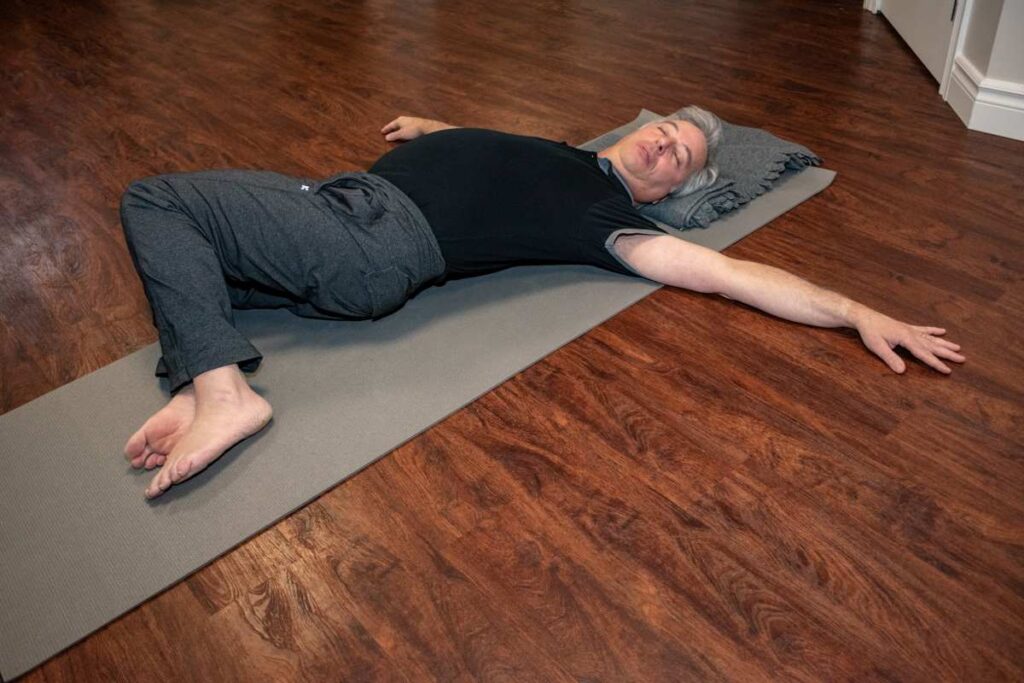
- Lie back flat on the yoga mat and draw up your folded knees to the chest.
- Exhale deeply as you let go of the knees and stretch your arms sideways. Have a support cushion handy and in position as you allow your hoisted knees to slowly fall to the side and onto a cushion.
- There is a tendency to subconsciously lift either arm as the knees fall to the side. Take note and keep them flush to the floor.
- Stay in that position for five deep breaths, raise your stacked knees to the middle position, and let them fall slowly to the other side.
ALSO READ: How To Choose the Perfect Workout Mat for Your Home Fitness Routine
If a wellness coach is in the picture, a calming yoga routine to help ease insomnia would require some trust and a sense of adventure. The emotional connection and mentorship between a wellness coach and client is crucial as some people find it difficult to come clean with their insomnia struggles. So, feel free to assess your wellness coach based on parameters like loyalty and shared interests before signing up with them. If the search gets too difficult and complex, search out free wellness resources on platforms like YouTube, get on your yoga mat, and have some revitalizing fun.
